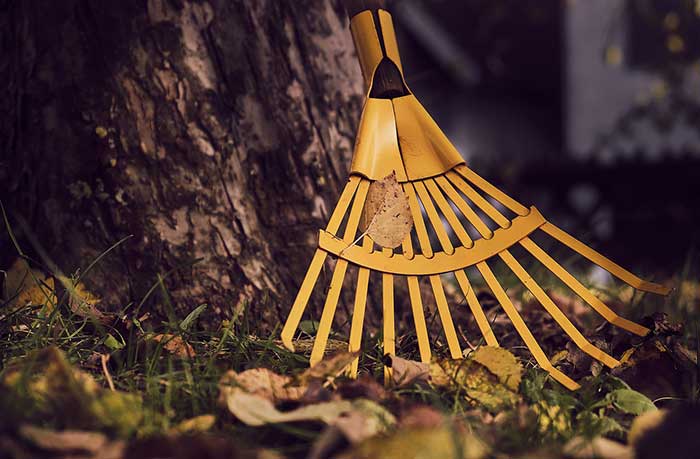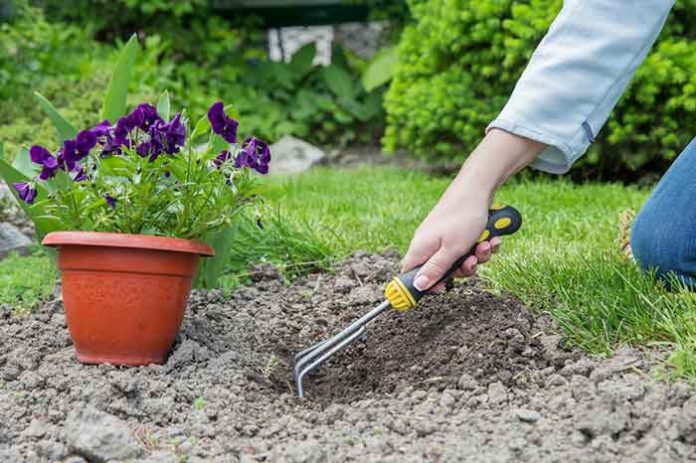Giving your garden the TLC it deserves can be hard in winter. Between a lack of motivation, frost setting in and rushing around to prepare for festivities, it’s easy for your garden to feel like the last thing on which you want to focus at this hectic time of year. However, putting the work in now in learning how to prepare your garden for winter will mean that you can nip any problems in the bud. Leaving your garden in the best position possible to bloom come spring.
Hand-Picked Content: Green Living Made Easy: Start Leading a Greener Lifestyle Today
5 Winter Gardening Tips For Beginners
Here are a few tips on where to start and how to prepare your garden for winter…
1. Cleaning up

Leaves and other garden debris may seem harmless and it can be tempting to leave them and just sort them out after they’ve built up. But this can actually cause serious damage to your lawn. Raking them when they’re freshly fallen will help ensure that your grass still gets the sunlight it needs. Especially when that sunlight becomes rarer as the nights draw in.
You should also set aside some time to clean out your garden storage and any unused pots. This will help you to identify any pest problems and check if any items need to be stored differently to protect them from the cold.
2. Plant Care- Removing the Excess Vegetation Efficiently

Winter is a great time to check up on and remove any diseased or dead plants that may have gone undetected or grown out of control. Make sure to carefully check each plant before removing them. As some varieties can actually provide valuable nutrients to the soil.
You must eliminate any dead plants, rotting fruits, and vegetables from your garden before winter begins. Certainly, you will never like to see any future plant material getting infected or reinfected. Particularly, removing any material with signs of disease, mildew, mold, or blight is a must. You may throw the excess vegetation in the trash or burn it. However, if you find your excess vegetation healthy, you may toss it in the compost bin. Remember to pull out any remaining weeds as well. Also, you can throw them in the compost if they look healthy too.
3. Tidying the Borders
Getting your borders in control before the winter will make it easier to carry out spot-checks throughout the cold months. As well as minimizing the work that you have to do when we enter spring. If you have bricks or pebbles as a miniature wall border. Make sure they’re all secure in place and add any extra adhesive or support necessary to prevent any damage from strong winds or snow.
Similarly, maintaining the borders of your lawn with a grass trimmer will help to minimize overgrowth. This will make sure that your lawn looks its best even when not covered in snow.
4. Making it Safe
With winter there come strong and unpredictable winds. Keeping your garden clear of anything that can be easily knocked over or blown away will help keep your family and your neighbors safe. Takedown free-standing gazebos, inflatable pools, and football nets and store them away until the warmer weather returns.
This is also the time to remove any branches from trees or large shrubs that could cause damage to property or others. If your branches are too big for garden shears then consider investing in a chainsaw that can easily remove these, as well as being a helpful tool for other DIY projects.
5. Checking your Soil to Ensure Its Fitness
Healthy and nutrient-rich plants result from healthy soil. The ground has to be in good condition and shape before it gets tucked away under frozen ground and snow during the winter months. You must pass your soil through a test to determine its PH levels, the concentration of potassium, phosphorus, calcium, magnesium, and sulfur. This test will also determine the amount of organic matter and lead content. The result of this test will let you know whether or not you need to add any sort of amendments moving ahead. For example, many gardeners like to add lime which is sure to provide a boost of calcium carbonate and magnesium carbonate. The whole winter ahead is enough to dissolve the lime into the ground.
Adding Mulch and Compost
Having removed all the unwanted material or tended all that is to remain in your garden, you may now add a layer of compost 1-2 inches thick. This layer will help prepare your garden for winter by soaking up nutrients in the soil. To help prevent soil erosion, you are advised to add another 1-2 inches of mulch over the layer of compost.
Once you’ve removed all unwanted plant material and tended to what will remain in your garden over the winter, you can add a layer of compost. We suggest it be about 1-2 inches thick. This will allow your soil to soak up nutrients over the winter. We suggest adding another 1-2 inches of mulch over your compost, too. This will help prevent soil erosion, nutrient leaching and weed development. It also works as insulation, shielding the soil from any ebbs and flows of thawing, freezing, sunshine and winds. When the soil is kept at a consistent, cool temperature, this also ensures everything in the garden stays in a dormant state.
If you have perennials in your garden, pack on another layer, about 2 inches thick, once the ground freezes. Materials such as shredded leaves, bark or wood chips, pine needles and straw are all good winter mulch choices. This added layer will help especially sensitive perennials and serve as a bigger buffer to snow.
Have You Learned How To Prepare Your Garden For Winter
If you love your garden for being a place of safety and sanctuary then following these steps will help you to keep it that way all year round.
Related Content: 5 Tips for Starting an Allotment





